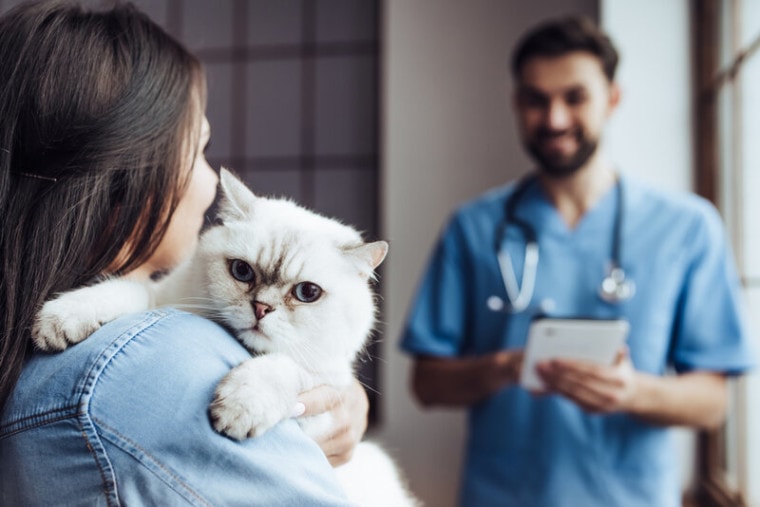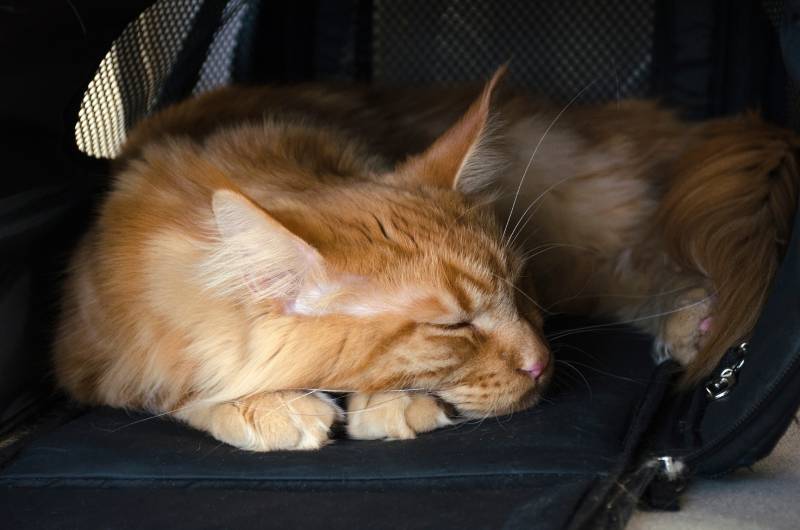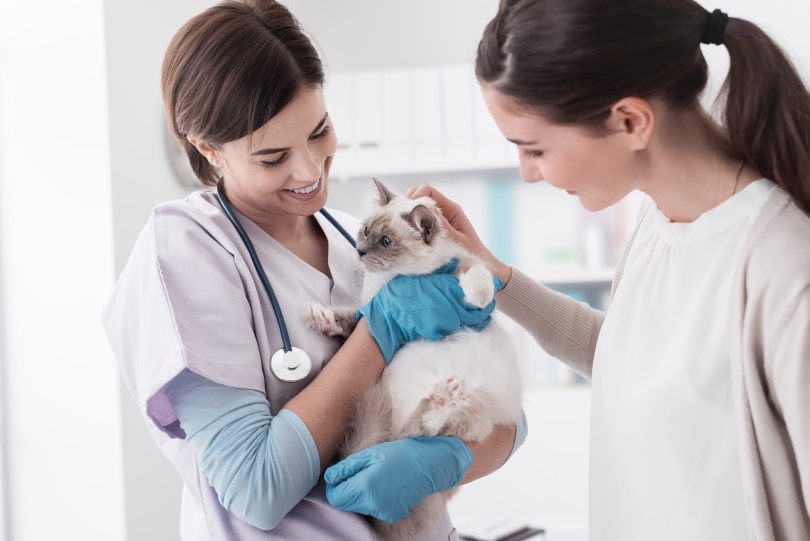
Cats prefer to be left to their own devices in an area where they feel comfortable. Disrupting their sense of peace can be difficult for both you and your cat. One of the most stressful situations your cat may experience is a trip to the vet.
If your cat isn’t accustomed to road trips and leaving the house, just the sight of their cat carrier can send them over the edge. They may run, hide, or even attempt to fight to avoid these medical road trips. Unfortunately, for cat owners, if their escape route is cut off, you often end up being the one on the receiving end of their punishment. Scratches and bites are hard on you but think about the stress and emotional hardships these scenarios put your cat through.
When you finally make it to the veterinarian’s office, your cat may still be on edge. Attempting to escape their carrier, lashing out at the staff, or running away are common reactions from cats of all ages and sizes. Luckily, there are ways you can calm your cat before and at the vet. Let’s take a look at 8 proven methods that make taking your cat to the vet easier for all those involved, especially your kitty.
The 8 Ways to Calm Your Cat Before & at the Vet
1. Introduce Your Cat to Their Carrier
This may not sound like a way to calm your cat for vet visits, but it does work. If your cat reacts with fear or aggression when seeing their pet carrier, working on getting them accustomed to the carrier may be the answer you’ve been looking for. The best way to do this is to leave the pet carrier out at all times instead of tucked away until it’s needed. If the carrier is an everyday object your cat encounters, they’re less likely to react negatively when it’s time to use it.

2. Take Car Rides More Often
While it may sound difficult, taking your cat on car rides will help prepare them for days when they have appointments. The trick to this is to get them accustomed to riding when they are young. If you take your kitten out often, they won’t be as scared when they make the trip to the vet.
3. Make It a Game
If your cat is playful, turning a trip to the vet into a game could be a great strategy. Playing peek-a-boo with the carrier is the perfect way to start this. Drape a towel or a blanket over the carrier. Let your cat see your face a few times before they try to settle down. With a cat’s love for dark caves and hideaways, the pet carrier and their ride to the vet may become an adventure for them.

4. Put Their Favorite Bedding in the Carrier
If your cat has a favorite blanket or cat bed, use it to your advantage. Placing these items in the pet carrier may make your cat go inside without a fuss. It is also a great trick for keeping your cat calm while at the vet’s office. If they feel like they’re at home, the less stress they’ll experience and the better the outcome for everyone.
5. Use a Vet Your Cat Is Comfortable With
If your cat doesn’t like its vet, most likely, every visit will be difficult. Luckily, there are many cat-friendly veterinarians available, and even cat-only clinics. These vets know how to make the situation easier and less stressful on your feline friend. Often, designated cat areas are a part of their practice. This lets your cat wait their turn without worries of dogs frightening them with their loud barks.

6. Use Their Favorite Treats
While cats are not easily fooled, if they have a favorite treat, you may be able to coax them into calming down. You can use treats on the way to the office or while you wait to see the veterinarian. Before trying this method, however, clear it with your vet. If they need to see your cat on an empty stomach you must follow their guidelines.
7. Reassure Them With Your Love
Cats may be solitary creatures but even they need love and affection. This is especially true when they are scared. During the ride to the vet, talk softly to your cat. Your voice may be just the thing your pet needs to find some relief in the situation. Once you’re at the vet, you can increase the loving attention by softly petting your cat during the visit if you aren’t interfering with the vet’s examination.
8. Pheromone Sprays
Another way to help your cat prepare for a stressful situation is a calming cat pheromone spray, such as Feliway Classic spray. These synthetic pheromones mimic a cat mother’s pheromones to help calm your cat and give them a sense of peace. Make sure to read the information that comes with your spray to learn how long it takes the spray to take effect and how long it will last afterward.
It is highly recommended to talk to your veterinarian about the use of this or other sprays you are considering using. The degree of effectiveness will vary from one to another, and the response of each cat can also be very variable.
You may also be interested in:
- How to Calm Your Cat During Fireworks (12 Tips That Work)
- Can You Take a Stray Cat to the Vet for Free?
In Conclusion
While a trip to the vet can be difficult for both pets and owners alike, knowing how to get your cat prepared for the journey can make all the difference in the world. If you have a cat that stresses out in the car and at the veterinarian, these 8 tips should make life easier for you, your cat, and the veterinarian involved.
Related read:
- How To Calm Your Cat While On A Plane (7 Tips That Work)
- Can Cats Get Hiccups: Why They Happen & How to Stop Them
- What Is the Average Cost of a Vet Visit for a Dog?
Featured Image Credit: 4 PM production, Shutterstock








